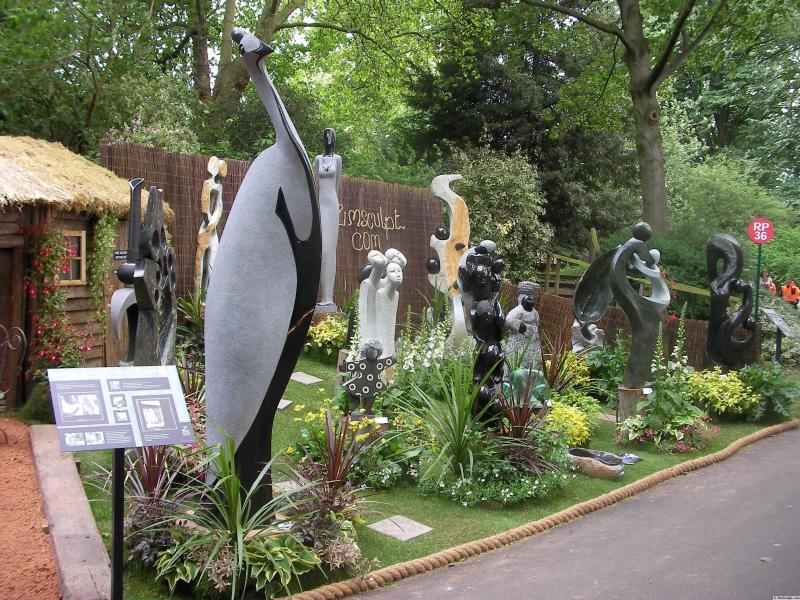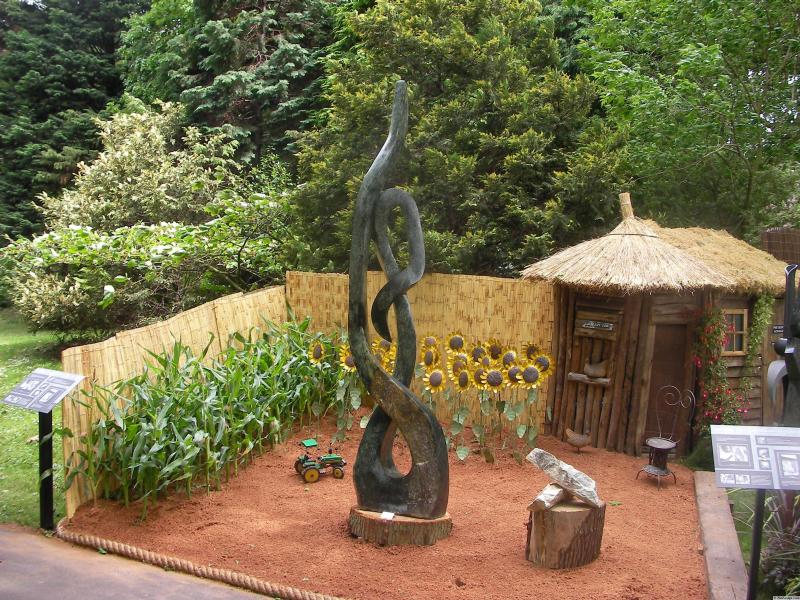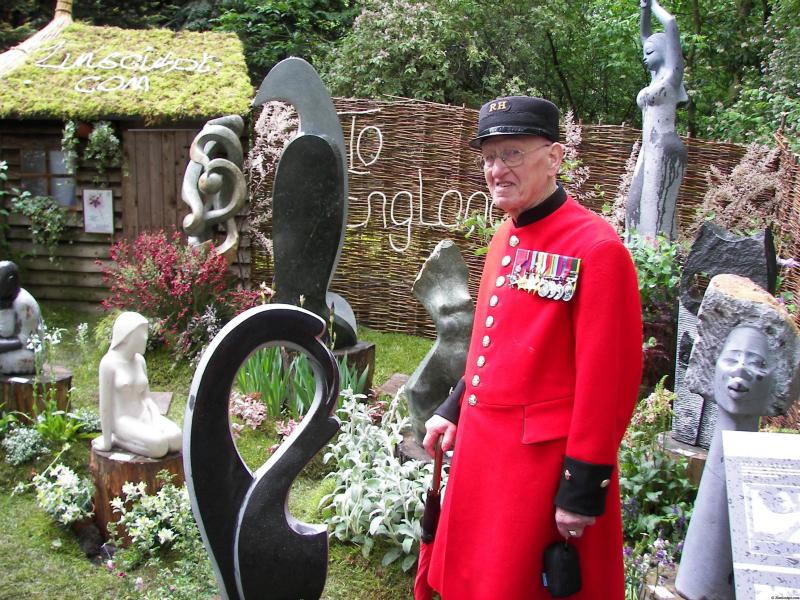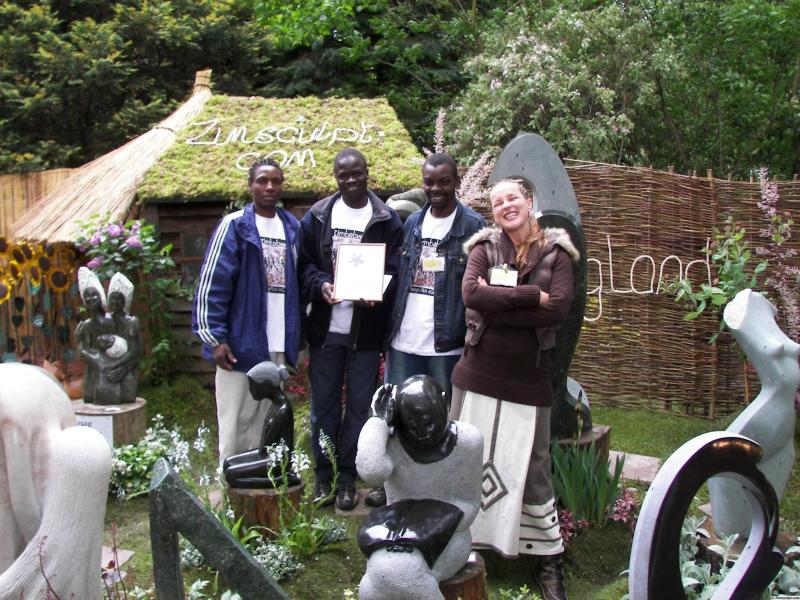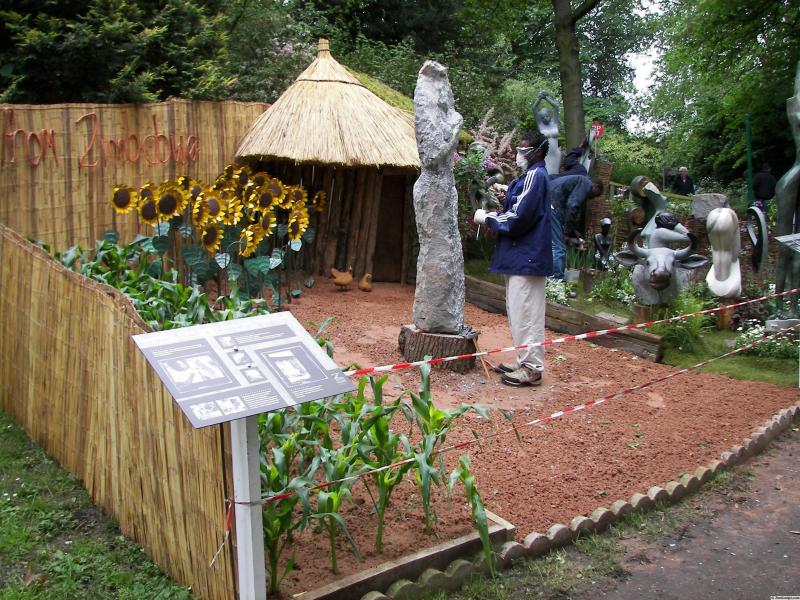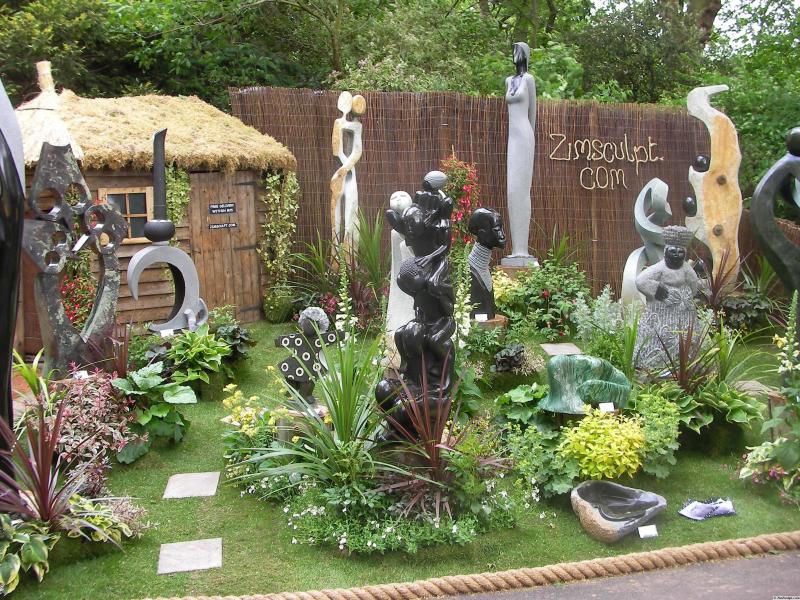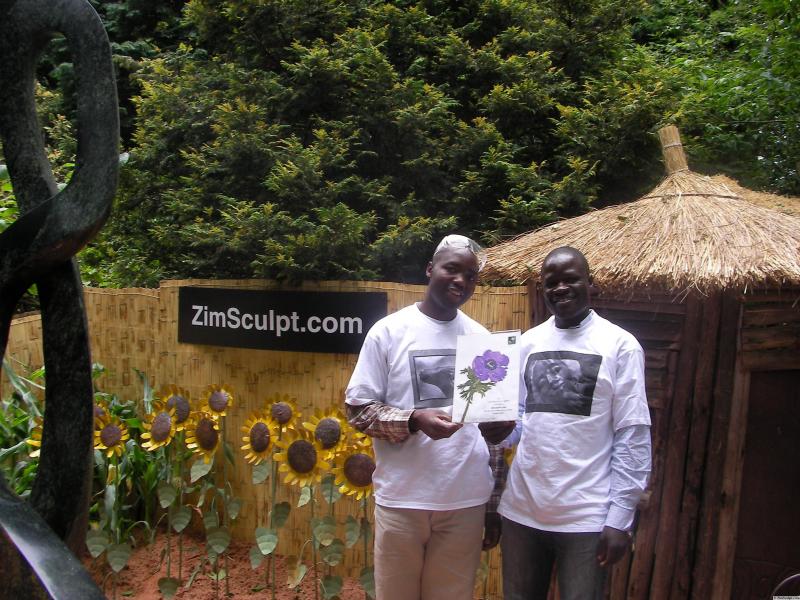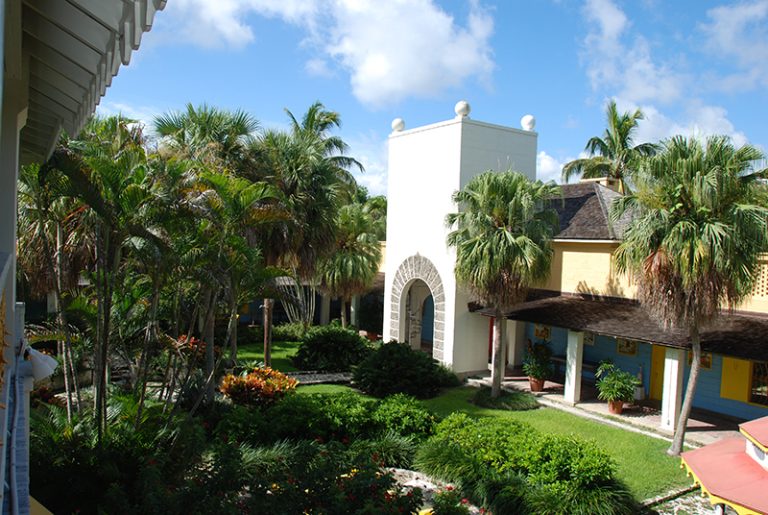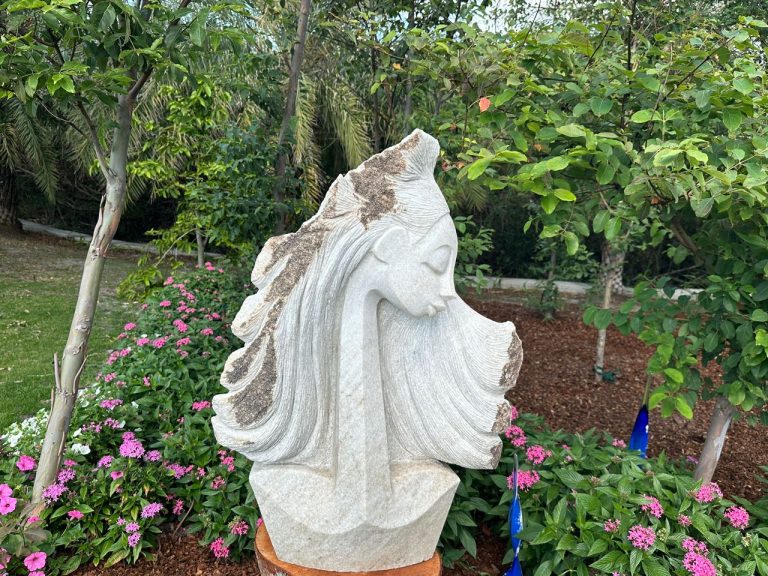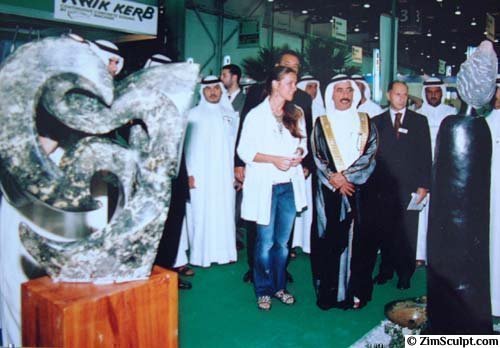Previously ran: 2006-11
6 consecutive years winning awards at Chelsea Flower Show.
157,000 visitors pass through this famous flower show ever year.
It’s a 16 hour day for us for 5 days of the Chelsea Flower Show, not to mention the treacherous build-up and breakdown time, a week before and after.
Given the usual uncertain weather in the UK we often set up this exhibition in gale-force rains and wind! We are given a piece of green grass on a un-even bank 10 metres long by 5 metres deep and have to ‘construct’ a garden… our garden design wanted to portray the ‘journey’ that the Zimbabwean sculpture goes through to get to anywhere in the world and also to show that African sculpture has it’s place in a traditional English garden.
We set up half of the space with a typical rural Zimbabwean scene – thatched rondavel, red soil, maize field & sunflower plot. In the middle of this Zimbabwean garden we placed a huge (3 metre high) sculpture to capture the crowded audience walking past. The two gardens were slightly separated with railway sleepers on the floor…
The other half of the space we designed a typical English garden, with typical English country flowers. This garden had a small wooden garden shed backing on to the thatched rondavel and a small-slabbed spaced-out pathway that meandered through the garden back, from side to side. Within this garden we positioned up to 20 different sculptures in various positions, so the person walking through our garden could see every angle of each sculpture.
Along the frontage of our area we placed information panels about ‘the journey’ the sculpture goes through, from the mines, to the artist creation, to the packing and shipping to your final experience in front of you.
The set-up of our exhibition space was no mean feat. We had an uneven bank to work with, which meant positioning everything needed severe ‘safety’ control. Apart from that we were not allowed to disturb the eco-system of the gardens and could not excavate at all where we were! All of the sculptures were mounted on log bases which had to be positioned and pinned with wooden wedges and stainless steel pins around the bases to keep them in place. These of course were totally concealed by planting at the end, but meant that our job was labor-some and at times risky.
Our shed had to be cut in precise angles to fit the gradient of the bank. Luckily the rondavel was made with gum poles, so these were easy to position at different lengths. The entire space had to be encompassed by fencing panels to keep the plot neat and together as an exhibit, the Zimbabwean garden had reed fence panels and the English country garden. wicker.
The end result we think was stunning – a wonderful way to represent Zimbabwe and it’s wonderful art movement. Certainly we must have been one of the most photographed stand after the Show Gardens. We won awards for our display every year from Merits to Commendations.
watch the YouTube Video (2011)



